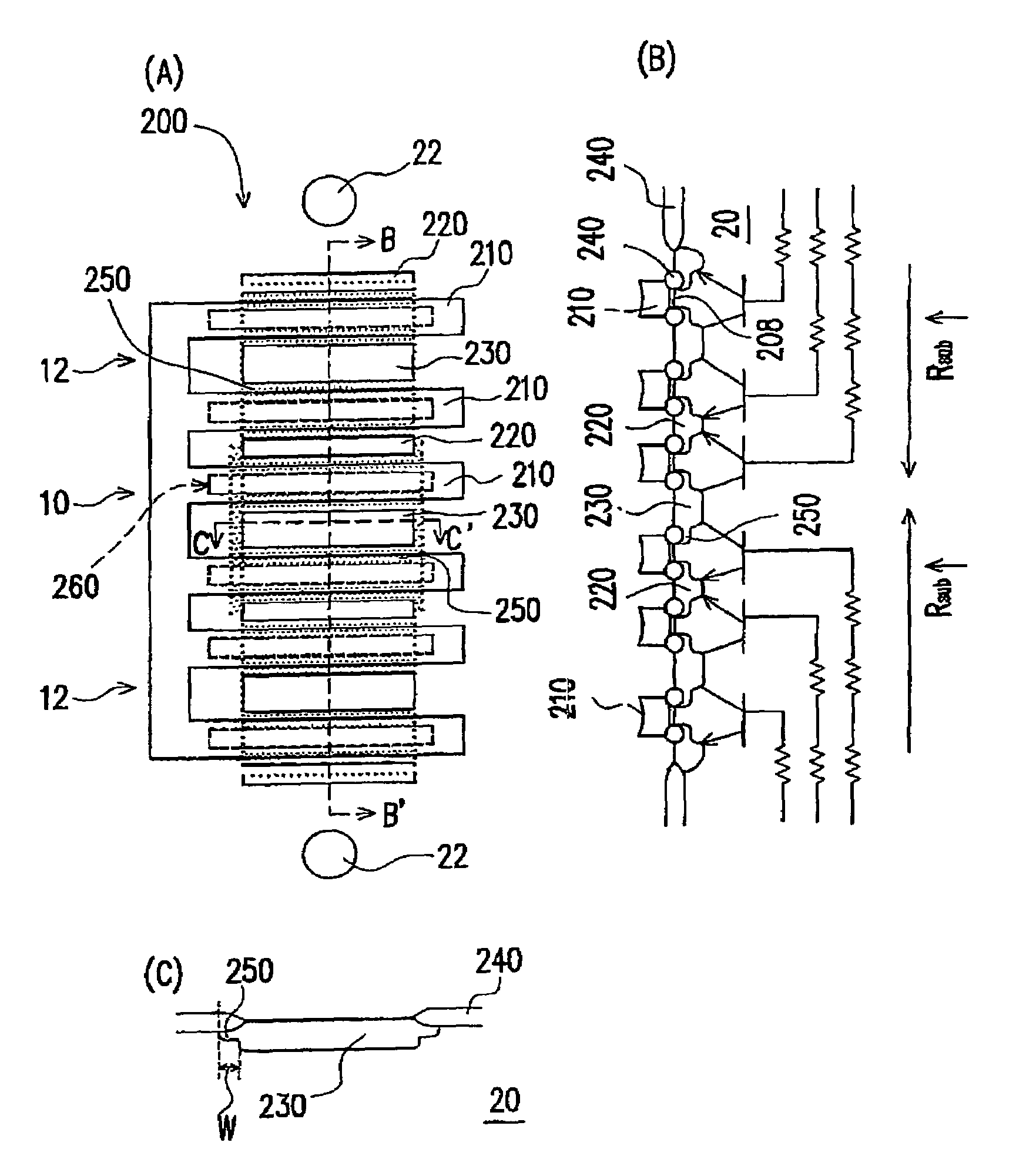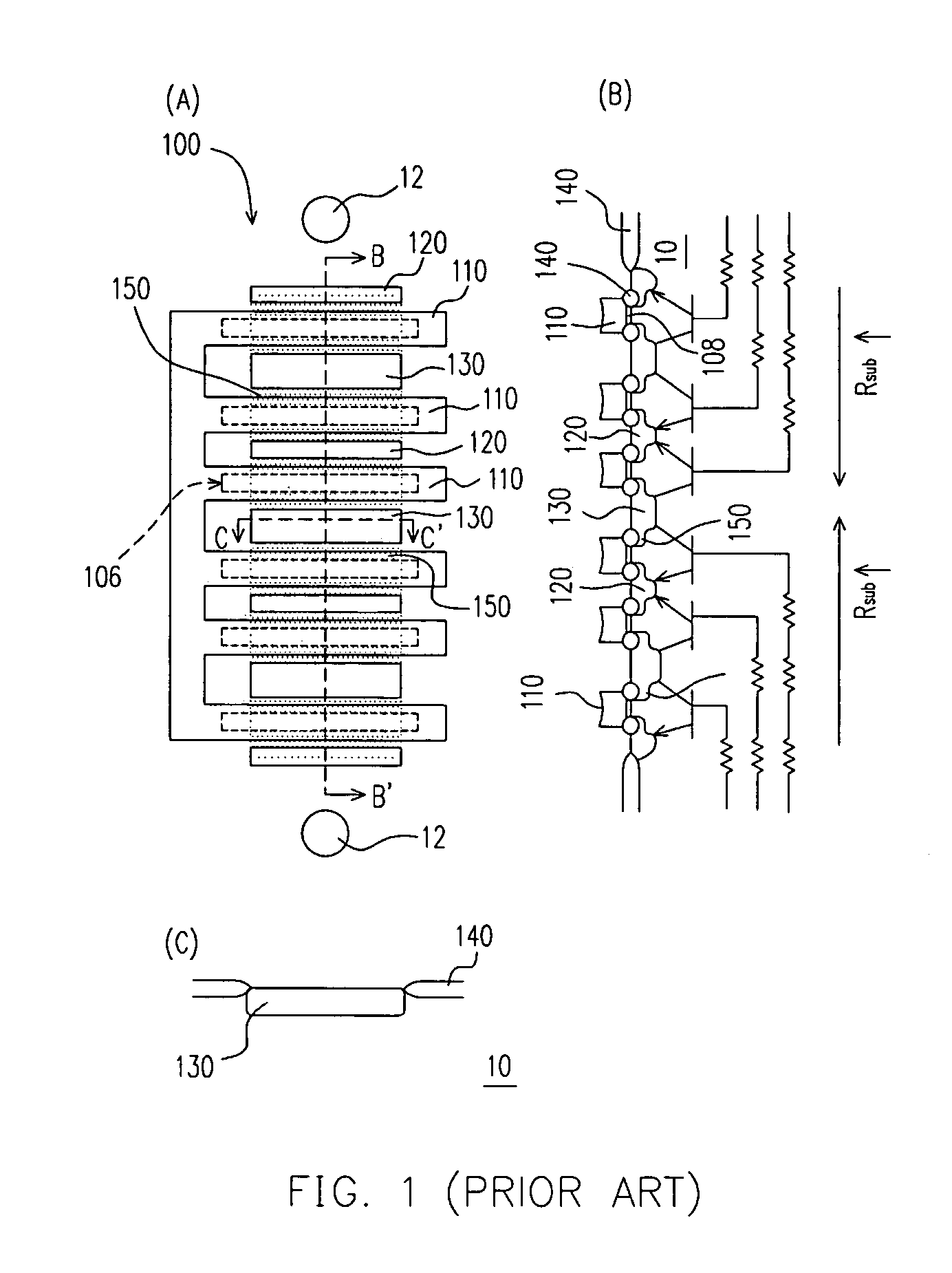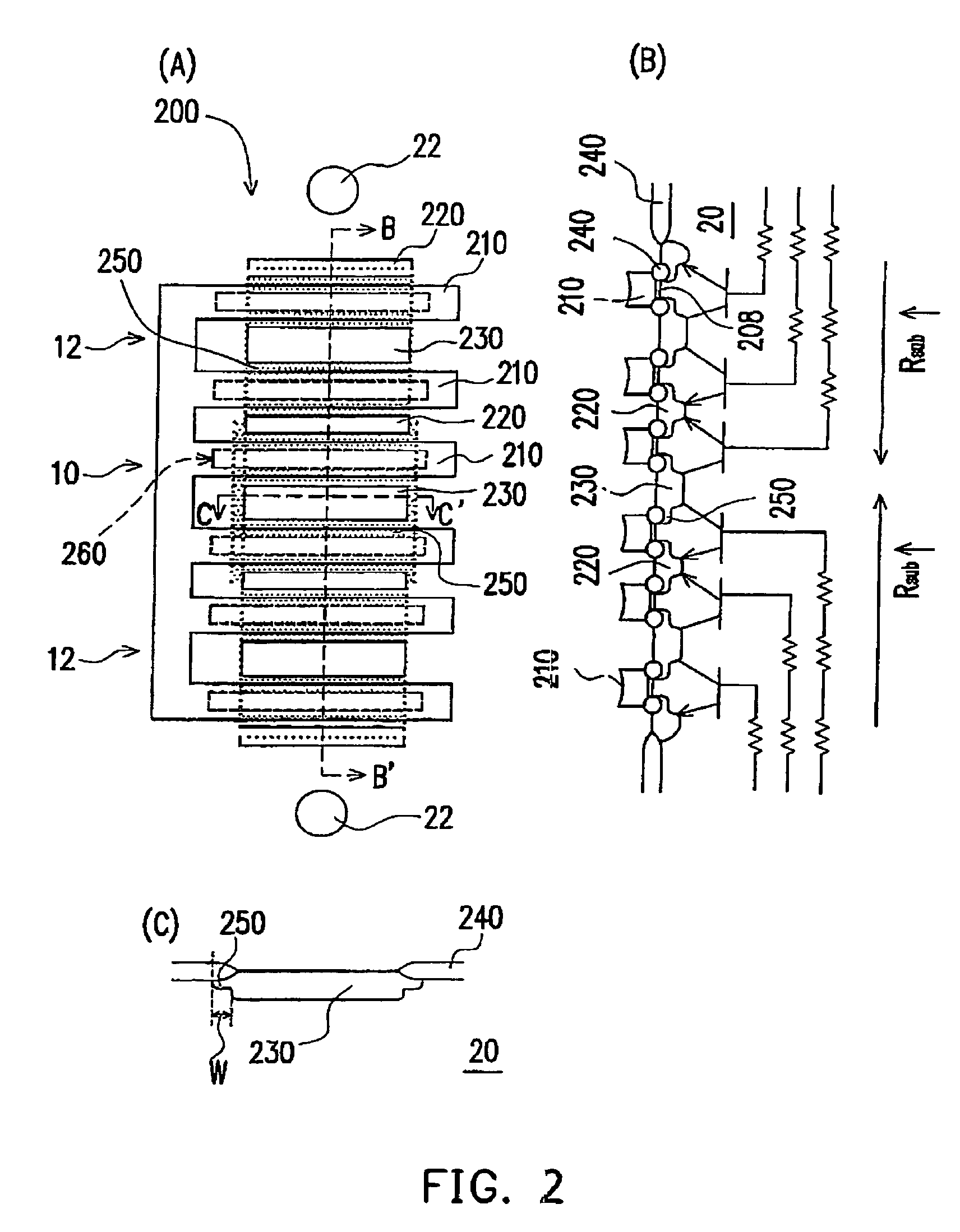Multi-finger transistor
a multi-finger transistor and transistor structure technology, applied in semiconductor devices, semiconductor/solid-state device details, electrical devices, etc., can solve the problems of affecting the miniaturization of the device, affecting the protection function affecting the lateral area of the multi-finger transistor, so as to prevent the damage of the drain region
- Summary
- Abstract
- Description
- Claims
- Application Information
AI Technical Summary
Benefits of technology
Problems solved by technology
Method used
Image
Examples
Embodiment Construction
[0018]FIGS. 2(A), (B) and (C) illustrate a multi-finger transistor according to the preferred embodiment of this invention in a top view, in B–B′ cross-sectional view and in C–C′ cross-sectional view, respectively.
[0019]Referring to FIG. 2, the multi-finger transistor 200 is disposed on a P-well (or P-substrate) 20, including multiple parallel gates 210, N-doped source regions 220, N-doped drain regions 230, a field oxide layer 240 and drift regions 250. The P-well 20 further includes two pick-up regions 22 at two sides of the multi-finger transistor 200 along the arrangement direction of the parallel transistors. The gates 210 are connected to each other at the ends of the same side, and are separated from the P-well 20 by gate dielectric layers 208 overlying channel regions 260. The source regions 220 and the drain regions 230 are located in the P-well 20 between the parallel gates 210, and are arranged alternately in the P-well 20. A drain region 230 or a non-terminal source regi...
PUM
 Login to View More
Login to View More Abstract
Description
Claims
Application Information
 Login to View More
Login to View More - R&D
- Intellectual Property
- Life Sciences
- Materials
- Tech Scout
- Unparalleled Data Quality
- Higher Quality Content
- 60% Fewer Hallucinations
Browse by: Latest US Patents, China's latest patents, Technical Efficacy Thesaurus, Application Domain, Technology Topic, Popular Technical Reports.
© 2025 PatSnap. All rights reserved.Legal|Privacy policy|Modern Slavery Act Transparency Statement|Sitemap|About US| Contact US: help@patsnap.com



